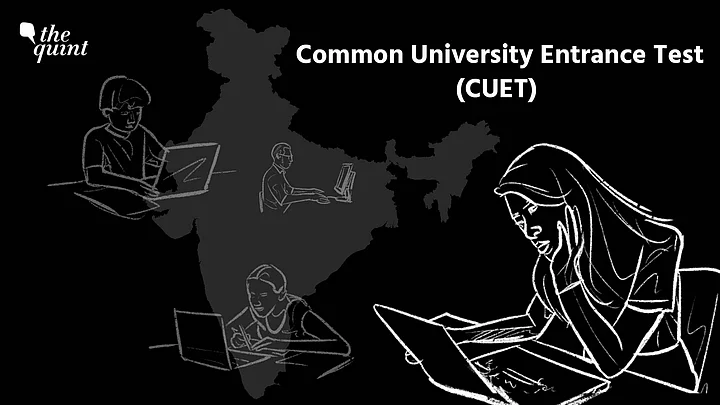Several students are worried about the disparity in the Common University Entrance Test (CUET) -- which began today -- as some have shorter time to prepare than others. The National Testing Agency (NTA) Chairperson Vineet Joshi, however, told The Indian Express in an interview that scores will be based on a "normalisation process and hence students writing the exam sooner will not be at a disadvantage."
Students found out their exam dates on 11 July when the exam city intimation slips were released. Those who have their exam in the first phase -- from today to 4 August -- felt they only had a few days left to prepare for it. Many worry that they won't be able to compete with those who will be appearing for the exam in the second phase -- 4 August to 20 August.
What is normalisation?
While awarding percentile scores, the relative performance of the candidate will be considered.
For instance, those who are sitting for a particular subject of CUET on 15 July will not be at a disadvantage in comparison to their counterparts appearing on 8 August because the percentile will be calculated based on the relative performance of candidates from that group.
Why is normalisation necessary?
Since students will be appearing for a vast range of subjects on different days, normalisation becomes imperative in order to ensure fairness.
The difficulty of the questions might vary across the sessions as well as across subjects. Hence, some candidates might end up attempting more difficult questions than others and are likely to get a lower score. The normlisation process is used by the NTA to ensure that 'candidates are neither benefitted nor disadvantaged due to the difficulty level of the examination'.
How does the NTA calculate percentile scores?
Percentile scores are the scores based on relative performance of all those who sat for that particular examination. The marks obtained are transformed into a scale ranging from 100 to 0 for each session of examinees.
The percentile score becomes the normalised score instead of the raw marks secured by the candidate.
According to the NTA website, the final score will indicate a candidate's performance vis-a-vis others who appeared in the test. Therefore, the result is an indicator of the relative position of the candidate among those who appeared for the test.
Has this been done before?
The normalisation process is not new. The same method is applied to engineering entrance tests. The NTA recently followed this process while marking students who had appeared for the Joint Entrance Exam (JEE) Mains.
It is also used in other tests such as the Staff Selection Commission (SSC) examination.
How many students are appearing for the entrance?
According to the NTA,14,90,000 candidates are appearing in CUET-UG, and these candidates have applied for 54,555 unique subject combinations.
The examination is being conducted in at least 10 sessions between 15 July and 20 August.
This will be the first time that the examination will be conducted on such a large scale. In March this year, the University Grants Commission (UGC) had made the examination mandatory for all students applying for undergraduate courses to central universities.
